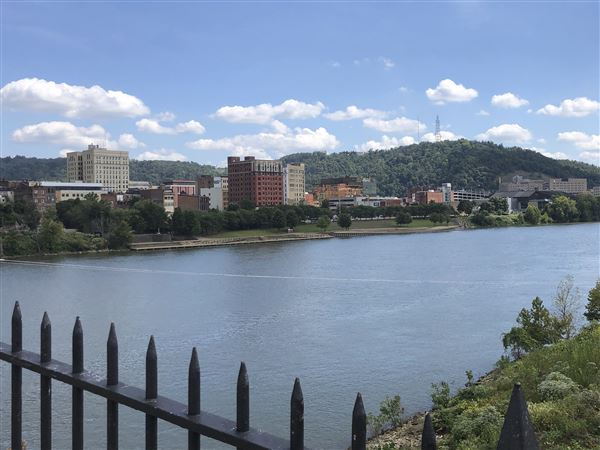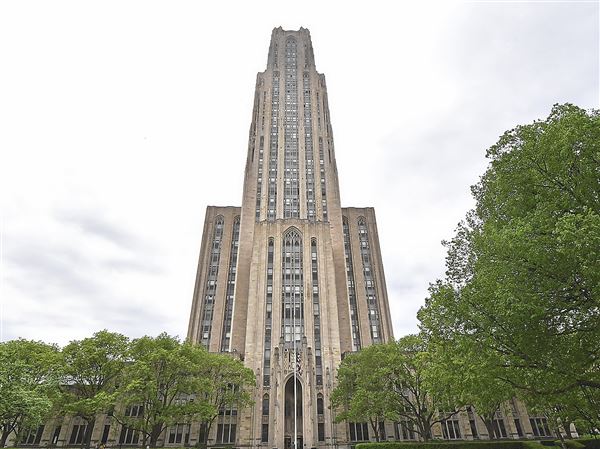Once a short time ago, a 2-mile-long stream of smelly storm runoff shot through the eastern suburbs, the Pittsburgh section of Regent Square and into the Monongahela River.
During the rainy season, oily sewage spewed from the stream's mouth into the river. During dry, cracked-mud summers, the stream almost disappeared, leaving tiny minnows -- the only fish that lived in the polluted rivulet -- without a haven.
In those days the odorous rill, officially called the Nine Mile Run, had a nickname.
"When I was growing up," said U.S. Rep. Mike Doyle, D-Swissvale, "we called it 'Stink Creek.' [Now] we hope people will not have a reason to call it that any more."
Doyle, along with city and county dignitaries, was speaking to about two dozen listeners on Friday. The day officially marked the end of Phase I for the Nine Mile Run Stream Restoration project.
Almost a decade since its inception, the project is meant to reconfigure and, by natural means, filter filth from the waterway.
In Phase I, contractors from Meadville Land Services Inc. planted native vegetation and created a system of rock riffles, pools and stepping stones meant to clean and aerate the runoff in the western half of the stream.
Phase II of the restoration is slated to start next month. Restorers say it will develop more flow-slowing technology in the eastern half of the stream.
Billed as the "largest urban stream restoration project in the entire country," the $7.7 million effort compelled the cooperation of Pittsburgh, Swissvale, Edgewood and Wilkinsburg; the Army Corps of Engineers; the Nine Mile Run Watershed Association; the Allegheny County Sanitary Authority; 3 Rivers Wet Weather Inc.; a group of Carnegie Mellon University artists; housing planners and contractors.
Nine Mile Run, so named because it lies nine miles upstream of the Mon River origin, runs through a six-square-mile area, comprising the above four municipalities. Over the decades, as development grew, storm runoff became more polluted with the grime and chemicals of city life.
More importantly, its velocity increased as paved surfaces took over from pollutant-filtering green spaces. Consequently, human and animal waste, car oil, insecticides and leachate from the old steel-mill slag heaps downstream exploded into the Mon River.
The idea of cleaning up the creek arose in the mid-1990s. The Rubinoff Co., developer of the Summerset at Frick Park housing plan, had begun discussing that project with public officials. Their original plan included 900 single-family homes ranging in price from $287,000 to $300,000.
At the time, the developer suggested that huge pipes be installed to carry away the runoff. Ultimately, the pipes and the stream would have been "culverted" or buried. The hope was to stifle the smell and conceal the pipes. But, the plan would have killed Nine Mile Run.
Consequently, it was not well-received, said John Schombert, the 3 Rivers Wet Weather executive director.
"The county Health Department didn't want it," he recalled. "Neither did the [Department of Environmental Protection]. Neither did community residents."
Still, it was understandable that Rubinoff was "afraid of developing high-end housing over a polluted creek," said Schombert.
Enter the Studio for Creative Inquiry, said Bob Bingham, a member of the group and a Carnegie Mellon University associate professor.
The group of Carnegie Mellon artists designed and pushed for the scene that now exists at the confluence of Nine Mile's tributaries: two brooks coming through Fern Hollow and Falls Ravine in Lower Frick Park.
Previously flat terrain slit by a lifeless watercourse has given way to softly undulating stream banks alive with black-eyed Susans, wild yellow daisies, red clover, delicate sycamore and cedar saplings and gray, weathered spires of standing tree trunks.
Walking westward across a footbridge toward an asphalt parking area, one sees watermelon-sized boulders lined up in steps to create riffles and pools that, when rainfall is heavy, will slow the rampage that once hurried into the Monongahela.
Shoved into the creek shores are tree root wads, or exposed root systems, meant to provide fish with resting places safe from predators.
It all appears natural, but it's not.
About a tenth of a mile west, the entire stream was diverted from its seven-foot-deep bed and made more shallow so that when the brook crests, the grasses on its shores will hold and filter out impurities.
Even the "standing log snags," meant to hold loose material moving through the water and to serve as homes for insects or birds, were placed by contractors.
Vince Sortman, an environmentalist with Biohabitats, of Maryland, said every blade of grass and each carefully placed stone has an ecological purpose. His firm was contracted to oversee the acquisition and placement of the stones and flora to attract naturally occurring aquatic creatures and insects.
"It's sort of like 'If you build it, they will come,' " he said, quoting a line from the 1989 movie "Field of Dreams."
In time, even the asphalt parking lot will be removed and replaced with gravel, said Jon Danzak, watershed association treasurer.
Some people living near Nine Mile liked things as they were. Gone is a playground with swings and slides. The large spaces ideal for running dogs or throwing Frisbees are shrunken.
But, said Marijke Hecht, there are such active recreation areas in other parts of Frick Park.
"What this brings is a passive recreation area that is no less friendly to families," said Hecht, watershed association executive director. Now, thanks to Pittsburgh water officials and the county Health Department, people now can splash in the stream that once hosted harmful levels of E coli bacteria, she added.
Joan Blaustein, a project manager with 3 Rivers Wet Weather who used to be a city planner for Pittsburgh, said at the outset of the project, "people were saying we've always had a stream with sewage in it. Why do you want to save it? This problem has been here for 50 years."
That tune changed when Summerset went in.
"I think it was a good catalyst," Schombert said. "It got everybody's attention and was some of the incentive to make the stream [pollution-free]. It created more motivation."
Motivation aside, there are still area diehards who have never seen a clean Nine Mile Run and don't believe it can be changed. Well-placed stones and lovely wild flowers may or may not do the trick.
"It's always been polluted," said Helen Burg, 79, who has lived in Swisshelm Park, a neighborhood within walking distance of the creek, all her life. "Only time will tell," she said of the environmental initiative. "Time will tell."
First Published: September 15, 2005, 4:00 a.m.
















